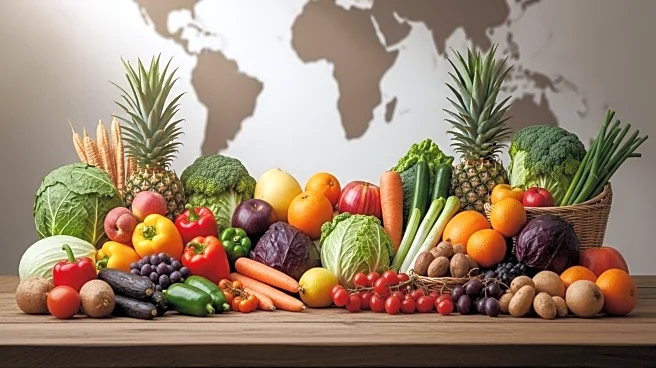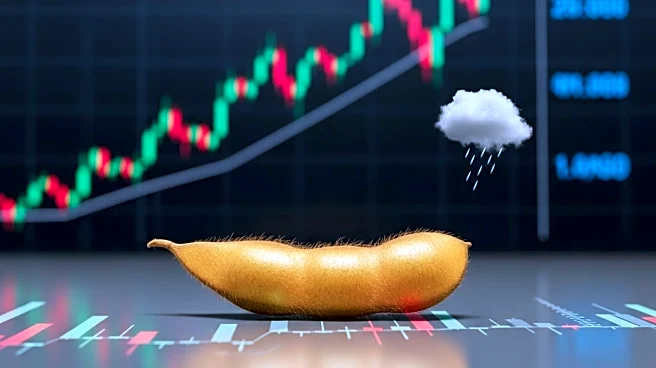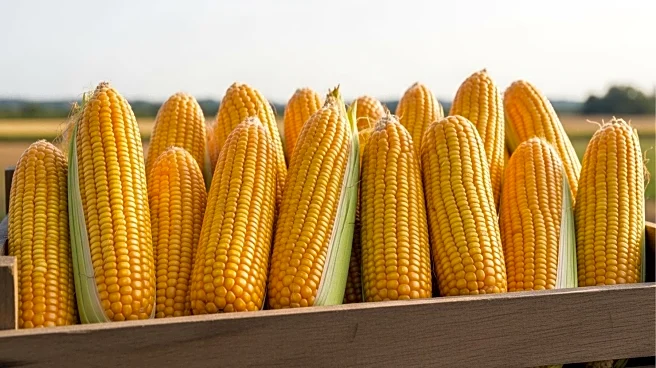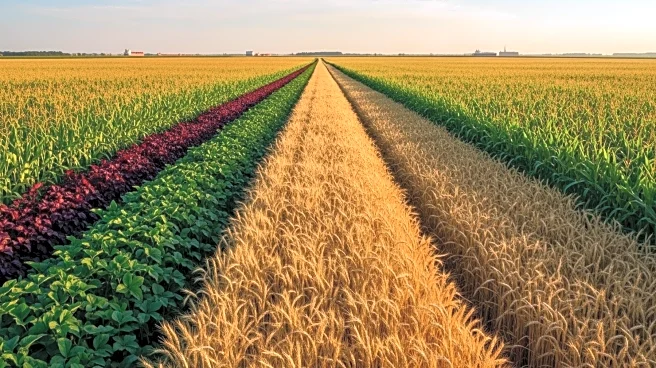What's Happening?
The United States Department of Agriculture (USDA) has projected record-breaking corn production of 16.7 billion bushels, with yields surpassing 188 bushels per acre. Similarly, soybean yields are expected to be strong, reaching nearly 54 bushels per acre. Despite these high yields, U.S. farmers are facing significant challenges in finding profitable markets due to ongoing trade conflicts. Historically, the U.S. maintained an agricultural trade surplus for nearly six decades, but this changed in 2019 amid tariff disputes. In the first half of 2025, the agricultural trade deficit reached a record $29 billion. Exports to China have notably decreased, with soybean sales hitting a 20-year low. As of late July, China had not purchased any U.S. soybean cargo, marking the longest buying delay since 2005. While crop farmers are dealing with weaker markets, livestock producers are experiencing reduced supplies, with USDA forecasting a nearly 4% decline in beef production and a decrease in pork output for 2025.
Why It's Important?
The current situation poses significant economic challenges for U.S. farmers, who are struggling with declining grain prices and increased costs due to tariffs. The average tariff rate has risen to 15.2%, the highest since World War II, adding financial pressure on farmers. This economic strain could lead to higher meat prices for consumers as livestock production decreases. The agricultural sector is a crucial part of rural America, where 97% of the land is rural and 20% of the population resides. The economic health of these areas is vital, as they rely heavily on agriculture. Additionally, about 16% of rural residents depend on SNAP food assistance, compared to 11% in metropolitan areas. The ongoing trade issues and economic pressures could exacerbate financial difficulties for these communities.
What's Next?
Farmers are advised to prepare for low returns in the coming years, as suggested by Professor Gary Schnitkey from the University of Illinois. The uncertainty surrounding trade policies and tariffs continues to loom over the agricultural sector. Stakeholders, including policymakers and agricultural organizations, may need to explore strategies to mitigate these challenges, such as seeking new markets or negotiating trade agreements. The situation calls for resilience and adaptability from farmers, who must navigate these economic hurdles while maintaining their operations.
Beyond the Headlines
The trade challenges faced by U.S. farmers highlight broader issues of economic dependency on international markets and the impact of geopolitical tensions on domestic industries. The agricultural sector's vulnerability to global trade dynamics underscores the need for diversified markets and sustainable farming practices. Additionally, the reliance on government assistance programs in rural areas points to underlying socio-economic disparities that may require policy interventions to ensure equitable support and development.












